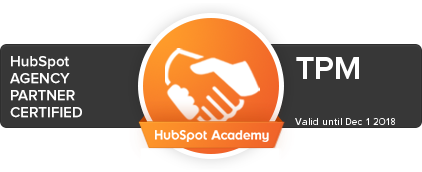There’s no denying that companies like Amazon, HubSpot, Salesforce, and IBM have great products. But even tech giants need partners to scale globally and reach markets around the world.
You only have to look at the partner programs offered by AWS or HubSpot to get a feel for the reverence with which they treat their channel partners. And for good reason. Partners represent one of the most — if not the most — valuable distribution channels in the B2B sector. But recognizing the importance of channel partners is only the first step. You also need to know how to measure the ROI of partner marketing campaigns — and what to do when they’re not helping you achieve your goals.
The Challenge of Measuring Partner Marketing
Partner marketing should not be treated — or measured — in the same way as corporate marketing. Unfortunately, we’ve seen too many vendors fail to recognize this and waste resources on partner marketing campaigns that miss the mark (if they even had a mark in the first place).
Tracking the ROI of partner marketing programs isn’t easy. Vendors and partners typically have siloed customer relationship management systems, making it hard to track the attribution of pipeline and sales back to partner marketing activities. This is a tricky problem to solve — but it’s not impossible.
3 Ways to Track Partner Marketing ROI
Customer engagement or conversion rates are the chief metrics for the success of regular marketing campaigns. And while they are obviously still a component in tracking the value of partner marketing, the ROI of partner marketing initiatives is measured in other ways.

1. Partner Engagement & Satisfaction
Beyond driving leads, sales, and increased revenue, your channel marketing efforts should build trust and enhance your relationship with the companies helping drive your success. Measuring partner engagement is vital — a major indicator of a partner’s potential for success is how engaged they are with your organization.
There are no channel partner performance metrics that will tell you how satisfied or engaged a partner is with your program, but a little detective work can give you a pretty clear picture.
- How often do they log in to your partner portal?
- Do they download your marketing assets?
- What’s their level of participation in your marketing campaigns?
- Do they regularly participate in your partner marketing update calls?
- Do they use their allocated marketing development funds?
- Are they using your training resources or partner enablement tools?
How to Improve
Your partner marketing ROI will be minimal if partners aren’t engaged with the program — or if they’re dissatisfied with what you’re offering.
There’s a wealth of data available on partner engagement and satisfaction, and the usage and download figures in marketing automation tools mean you don’t even have to look very hard for it. Survey tools or direct communication to gather feedback from your channel partners can also help you adapt and improve. Check engagement levels frequently and continue to make changes until partners are happy.
2. Channel Program Effectiveness
Program effectiveness metrics can help you track the ROI of specific partner marketing programs, providing granular insights into how well each program is meeting its objectives and the overall impact it has on the ROI of partner marketing.
There are plenty of tools available to gather and parse information, so all you need to do is define some key performance indicators to quantify success. Create a UTM to ensure all activities are accurately attributed. Some basic partner program KPIs you should be tracking include:
- End-user and partner engagement
- Leads attributed by partner
- Partner’s influence on pipeline
- Average deal size per partner
Be sure each tactical element and distribution channel is effectively tagged to track the influence of each partner in the program.
How to Improve
Alignment between all parties is a vital factor affecting partner marketing ROI. If the effectiveness of your channel program is low, consider investing time in delivering guidance to your partners. Make sure everyone is on the same page regarding:
- Campaign goals
- Audience
- Key messaging (including audience pain points, opportunity, solution)
- How to customize the assets
- Optimal times for email sends and social media posts
- Campaign timelines

3. Partner Relationship Management
Your partner relationship management system (or partner portal) can provide incredible insights into the ROI of partner marketing programs and your channel partners’ success. It helps bridge the gap between vendors and partners and reduces the risk of introducing errors into data as you collect information from partners.
Some PRM systems have built-in APIs that allow limited data flow between vendor and partner CRM tools. Ask your IT team about API access and work with key partners to enable a seamless flow of data so you can share in the success of campaign pipeline generation and won leads.
Get Help Measuring Your Partner Marketing ROI
Measuring the ROI of partner marketing programs can be challenging. If your internal team is not equipped to manage the metrics, a partner marketing agency can help ensure your efforts are on the right track. At TPM, we’ve helped B2B technology companies of all sizes optimize their partner marketing efforts. Let us help you, too — contact our team today.



